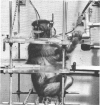Abstract
Methods for the evaluation in experimental animals of toxic substances that produce hearing impairment are described. In the experiments reported here, animals were trained by positive reinforcement operant conditioning procedures so that their hearing could be examined by behavioral means. When normal hearing was established, aminoglycosidic antibiotics (kanamycin and dihydrostreptomycin) were given daily and hearing tests administered in order that the course of hearing loss could be closely followed. Initial loss of sensitivity to the high frequencies always progressed in time to impairment at the low frequencies, and these changes in hearing were correlated with a loss of receptor cells in the inner ear which started in the basal region of the cochlea and advanced toward the apex. Although such behavioral procedures are moderately expensive to instrument and relatively time-consuming to apply, they are shown to yield valid quantitative measures of hearing. Further, they provide for reliable early detection of the toxic process and a measure of behavioral impairment that can be precisely related to the histopathological changes that occur simultaneously in the inner ear and auditory nerve.
Full text
PDF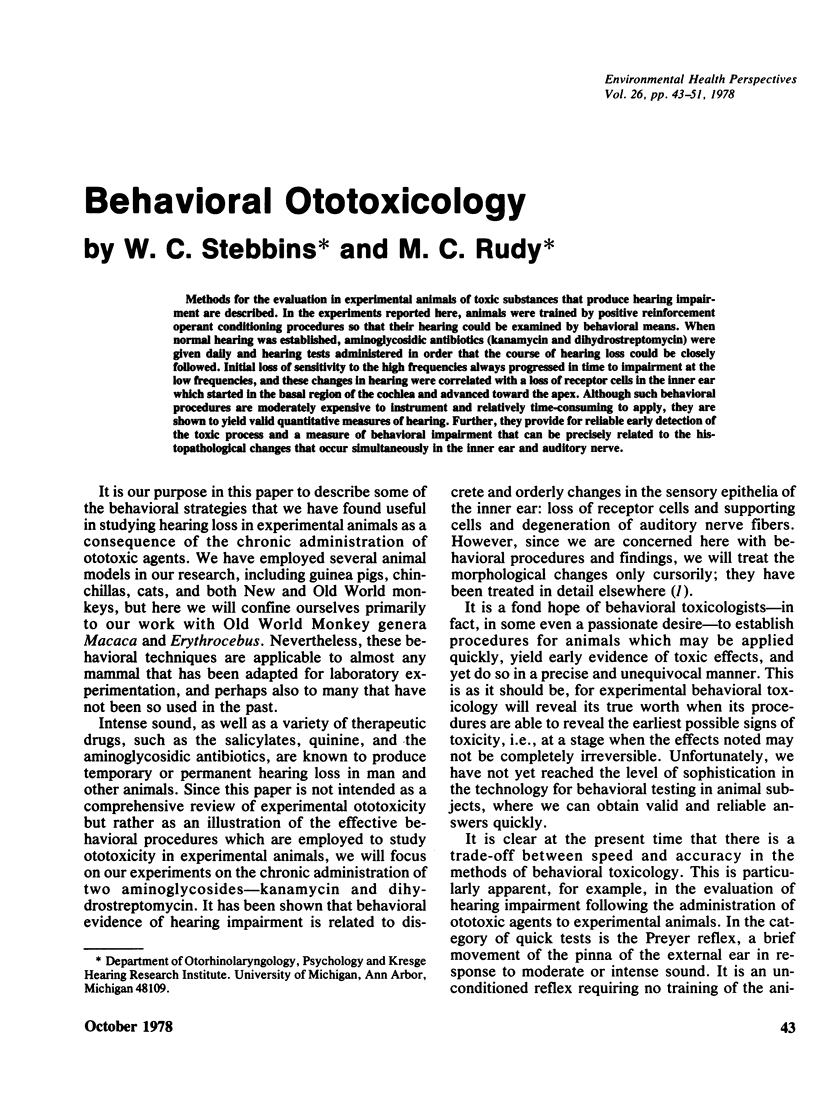
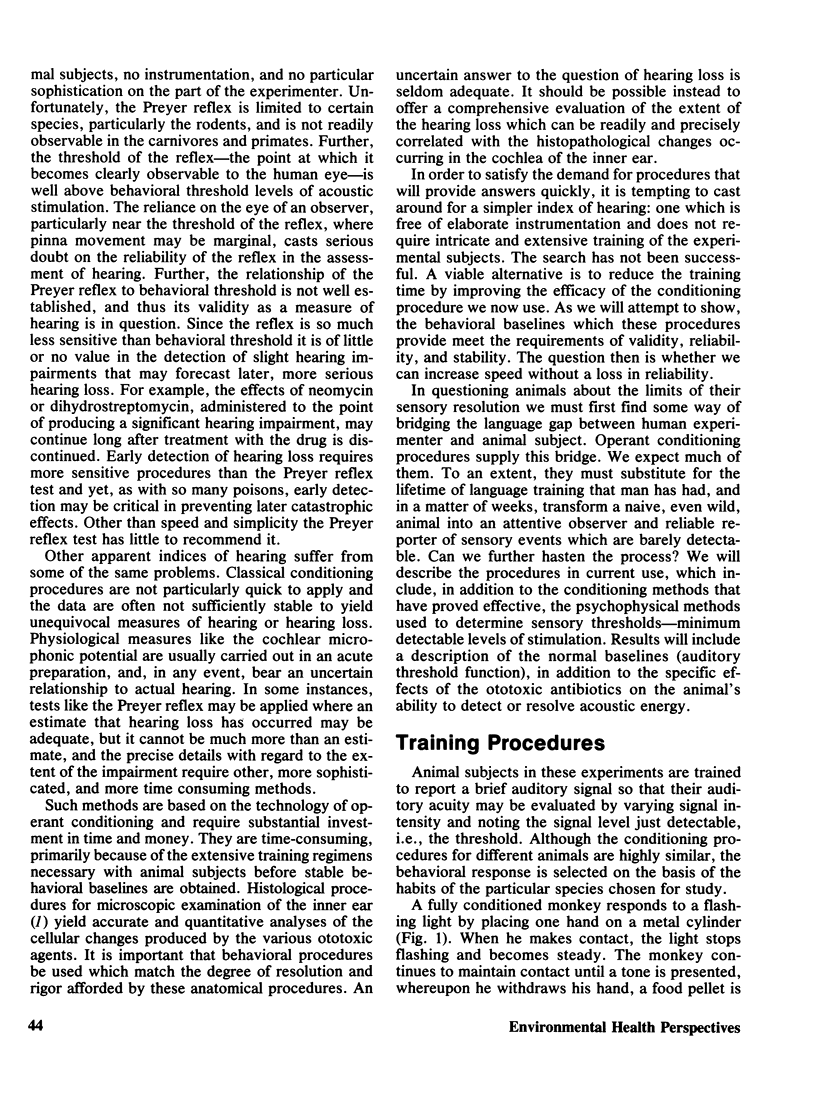
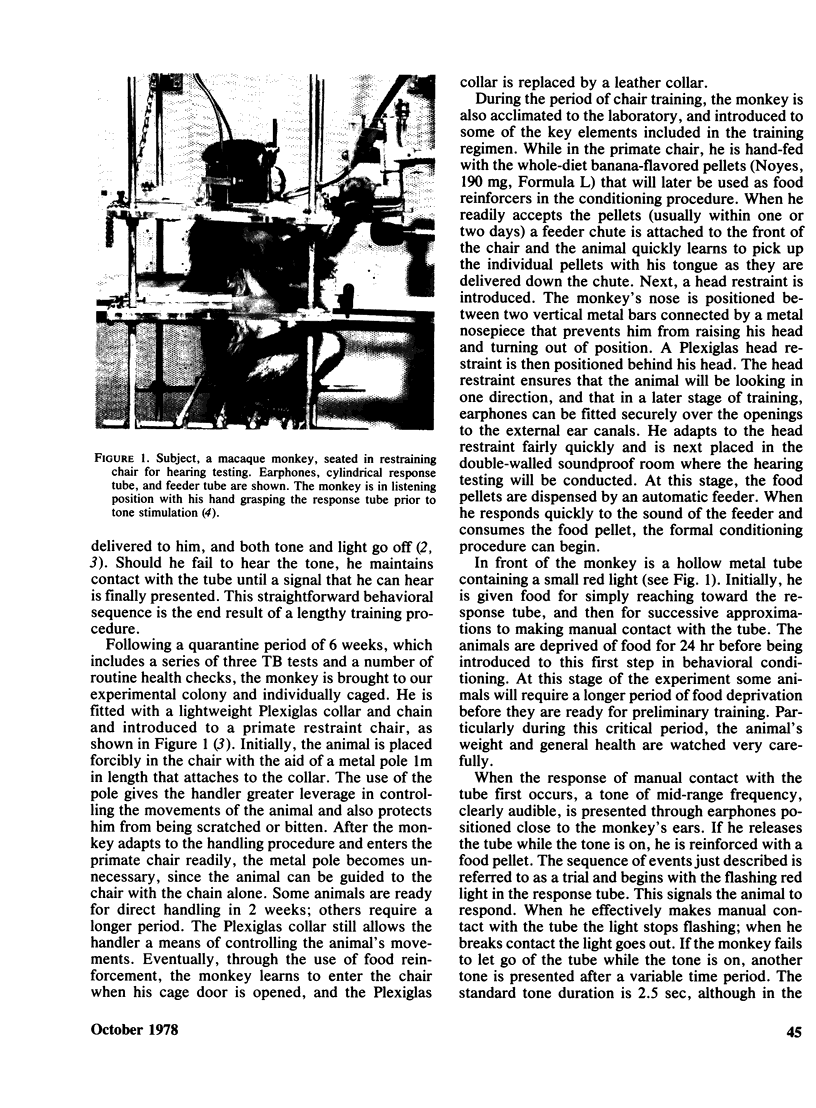
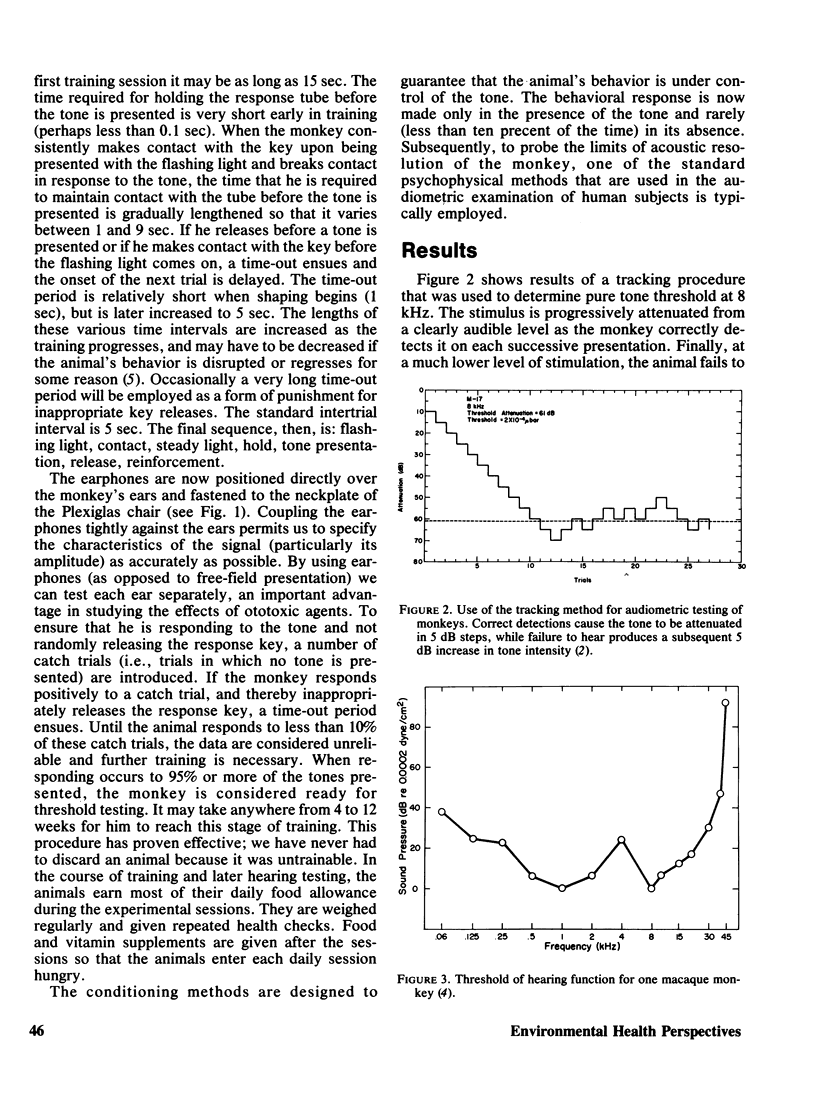
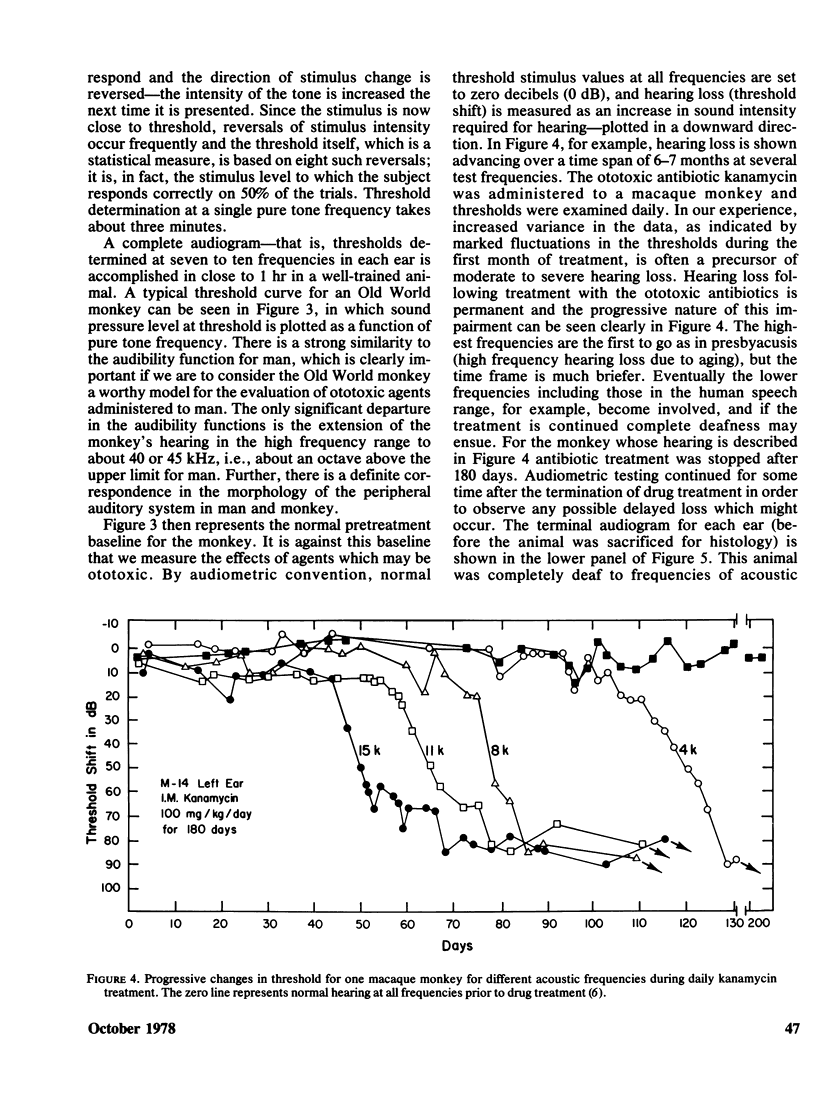
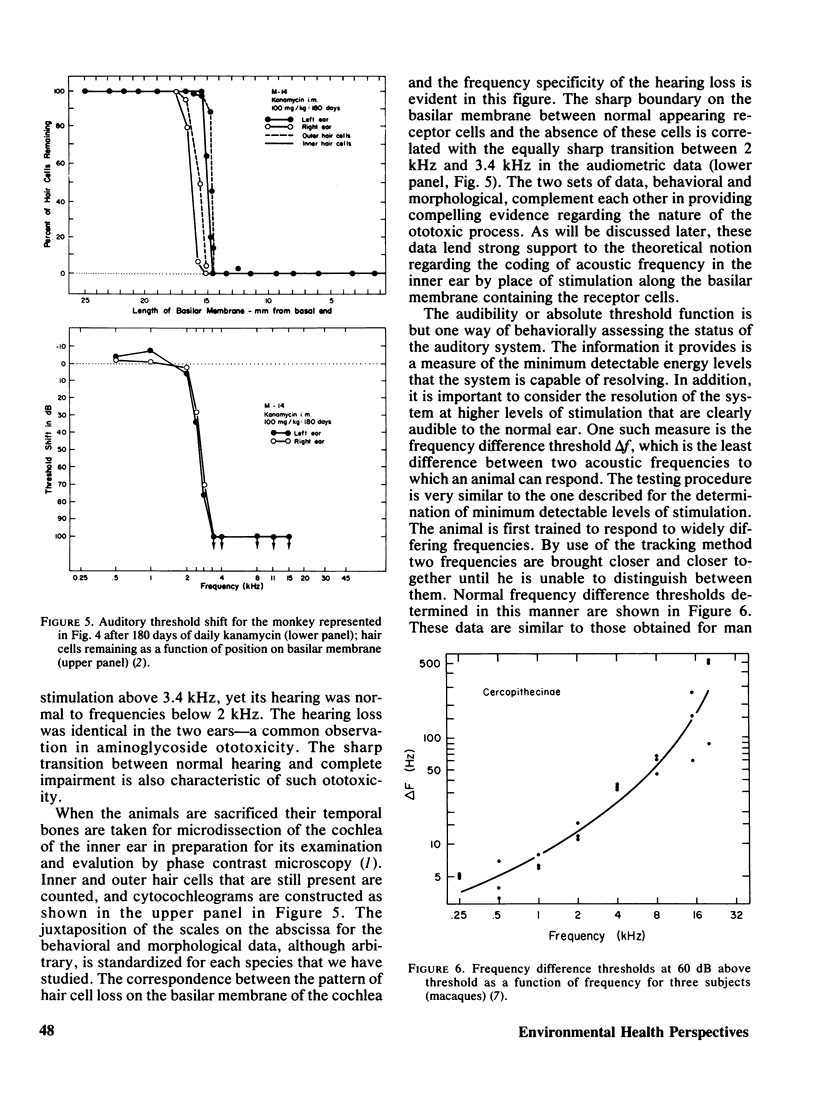
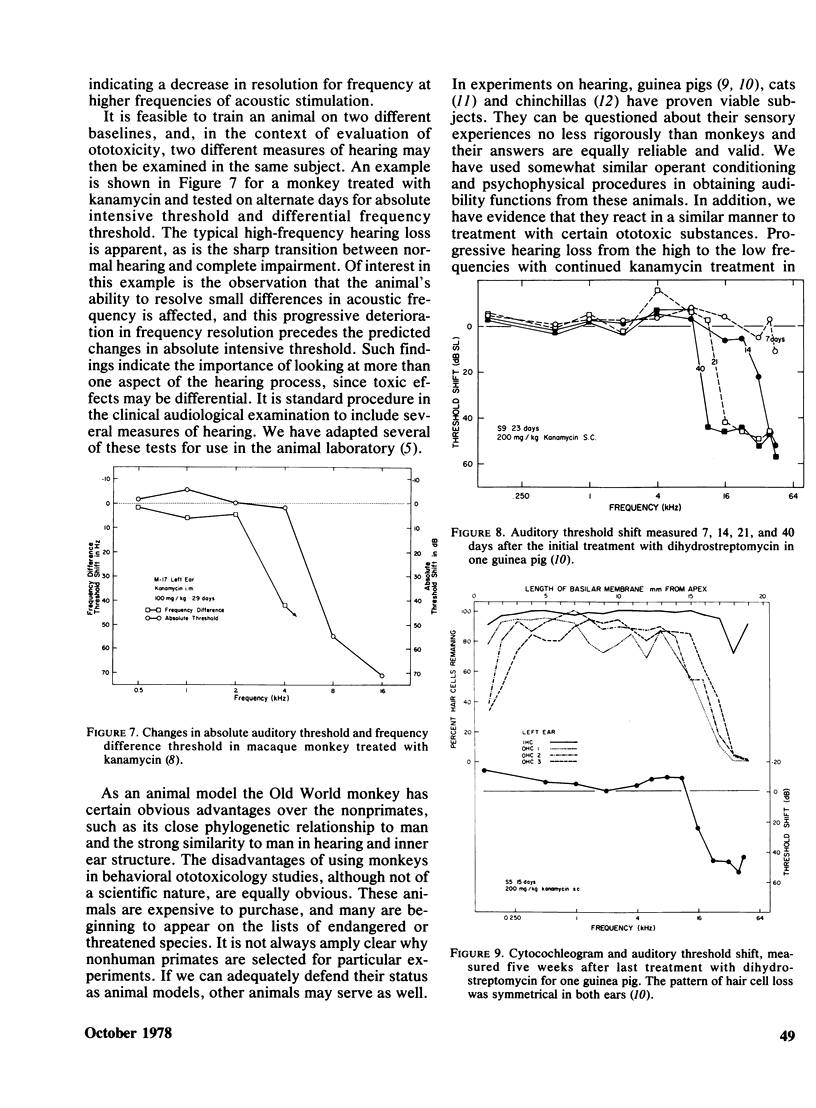
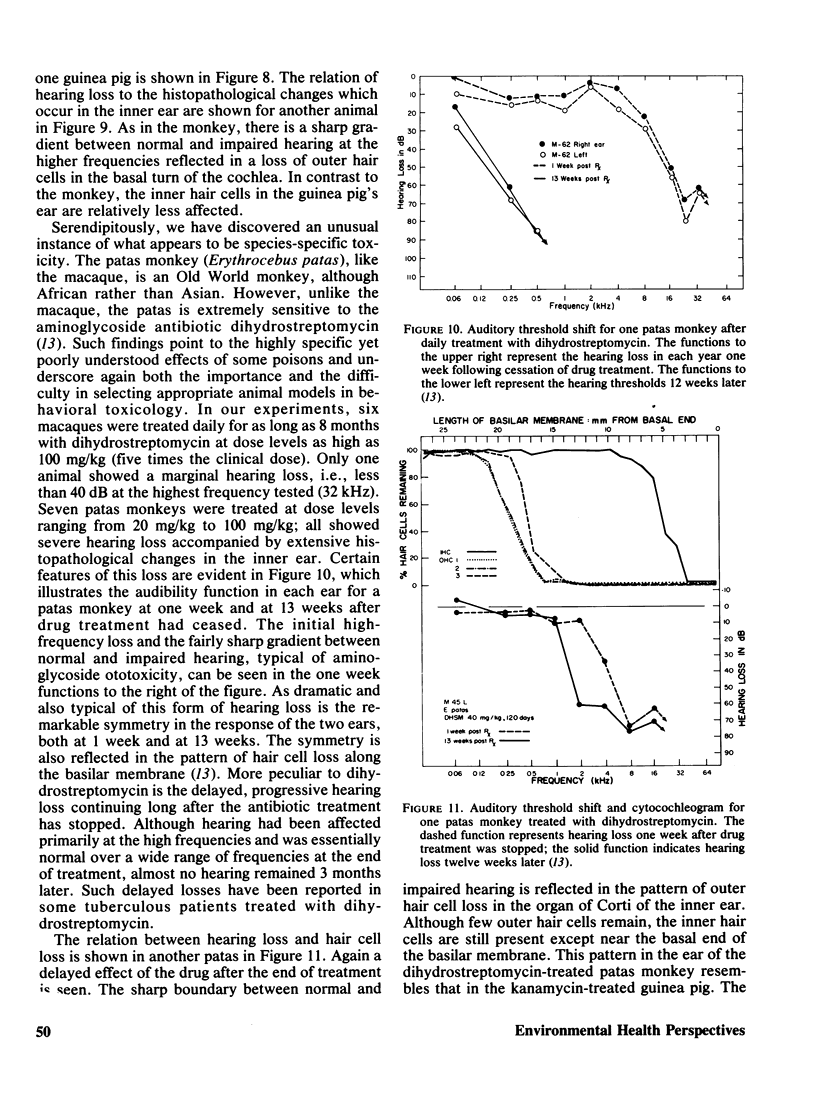
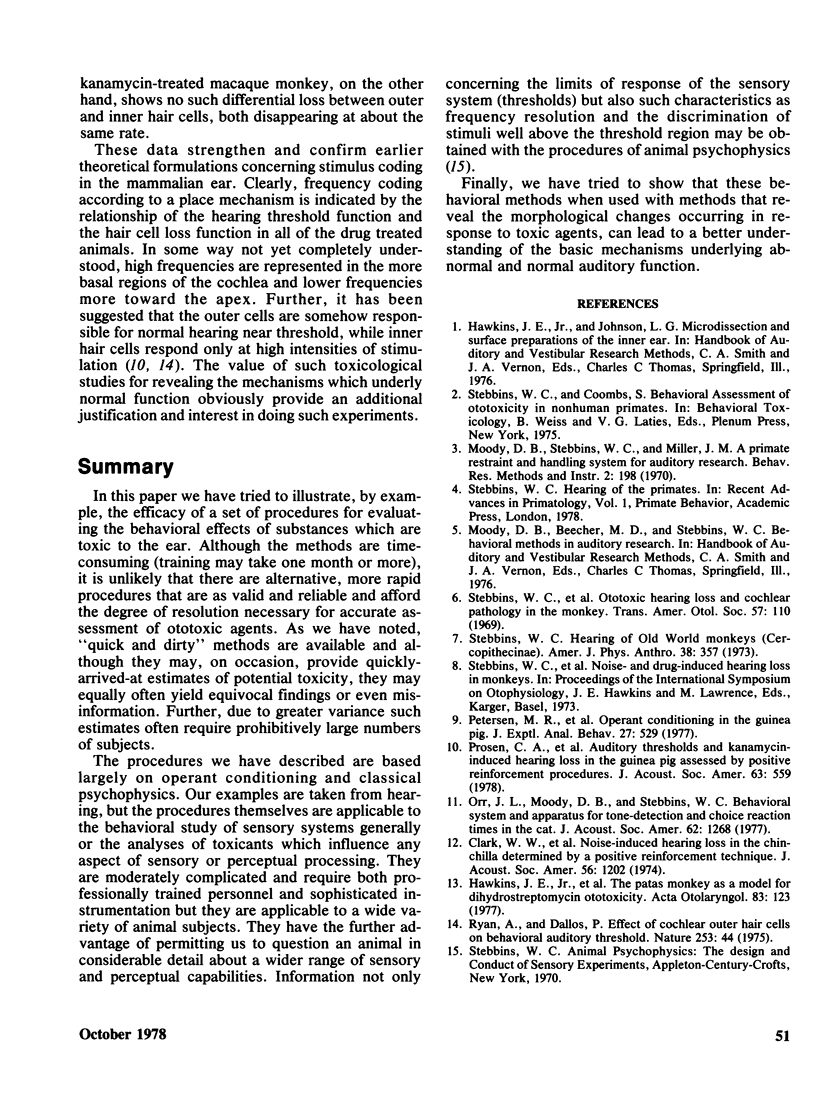
Images in this article
Selected References
These references are in PubMed. This may not be the complete list of references from this article.
- Clark W. W., Clark C. S., Moody D. B., Stebbins W. C. Noise-induced hearing loss in the chinchilla, as determined by a positive-reinforcement technique. J Acoust Soc Am. 1974 Oct;56(4):1202–1209. doi: 10.1121/1.1903409. [DOI] [PubMed] [Google Scholar]
- Hawkins J. E., Jr, Stebbins W. C., Johnsson L. G., Moody D. B., Muraski A. The patas monkey as a model for dihydrostreptomycin ototoxicity. Acta Otolaryngol. 1977 Jan-Feb;83(1-2):123–129. doi: 10.3109/00016487709128821. [DOI] [PubMed] [Google Scholar]
- Orr J. L., Moody D. B., Stebbins W. C. Behavioral system and apparatus for tone-detection and choice reaction times in the cat. J Acoust Soc Am. 1977 Nov;62(5):1268–1272. doi: 10.1121/1.381651. [DOI] [PubMed] [Google Scholar]
- Petersen M. R., Prosen C. A., Moody D. B., Stebbins W. C. Operant conditioning in the guinea pig. J Exp Anal Behav. 1977 May;27(3):529–532. doi: 10.1901/jeab.1977.27-529. [DOI] [PMC free article] [PubMed] [Google Scholar]
- Prosen C. A., Petersen M. R., Moody D. B., Stebbins W. C. Auditory thresholds and kanamycin-induced hearing loss in the guinea pig assessed by a positive reinforcement procedure. J Acoust Soc Am. 1978 Feb;63(2):559–566. doi: 10.1121/1.381754. [DOI] [PubMed] [Google Scholar]



